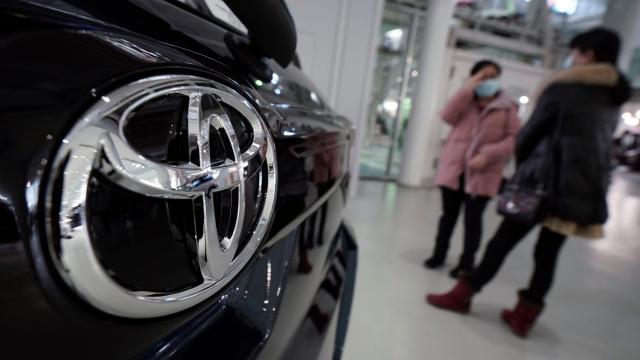Toyota is no stranger to “unintended acceleration,” agreeing to pay $US1.2 ($2) billion in fines in 2014 after a U.S. federal investigation found that the company covered-up safety issues in its cars amid what was one of the biggest recalls in automotive history. But unintended acceleration isn’t always because of a defect with the car, it’s frequently just simple driver error, to which Toyota said today it will soon have a possible fix thanks to “big data.”
The data was collected from cars connected to its network in Japan. The new technology, which Toyota said would be rolled out this summer in Japan and then, sometime after that, to the rest of the world, will attempt to detect pedal misapplication when it happens and then automatically slow down the car.
I would explain how Toyota says it will do all this but thankfully it released this handy graphic.
Intuitively, this makes sense, since if you’re driving at low speeds it’s unlikely you’ll need to floor it, unless, I dunno, you’re being chased or something. According to Automotive News, the system—new software, actually—will only be active from zero to 19 mph, meaning that it wouldn’t affect overtaking on the highway, for example.
The system leverages big data collected through the data communication modules installed in newer Toyota vehicles. The so-called DCM relays information to a central server about a vehicle’s operation, such as the acceleration position, braking and turn signal use. Toyota then uses it to calculate an algorithm that helps guard against unintended acceleration.
Toyota has installed DCMs in 1.8 million vehicles on Japanese roads since 2002.
Toyota said that the system will be optional on new cars and in place whether or not there are obstacles ahead since it is based on detecting abnormal driver behaviour and not relying on external sensors.
As Reuters points out, a system like this (assuming it works) could help prevent traffic accidents in Japan, where 15 per cent of fatal accidents in 2018 were caused by drivers 75 or older, and where the number of accidents involving that demographic has doubled since 2007 as Japan’s population has aged.
And software-based safety fixes like this are, in some ways, low-hanging fruit for automakers, since they don’t require any hardware modification. This one, being optional, also seems relatively harmless, though I can imagine a world in which the implementation gets messed up, temporarily bricking a whole bunch of cars in the process.
